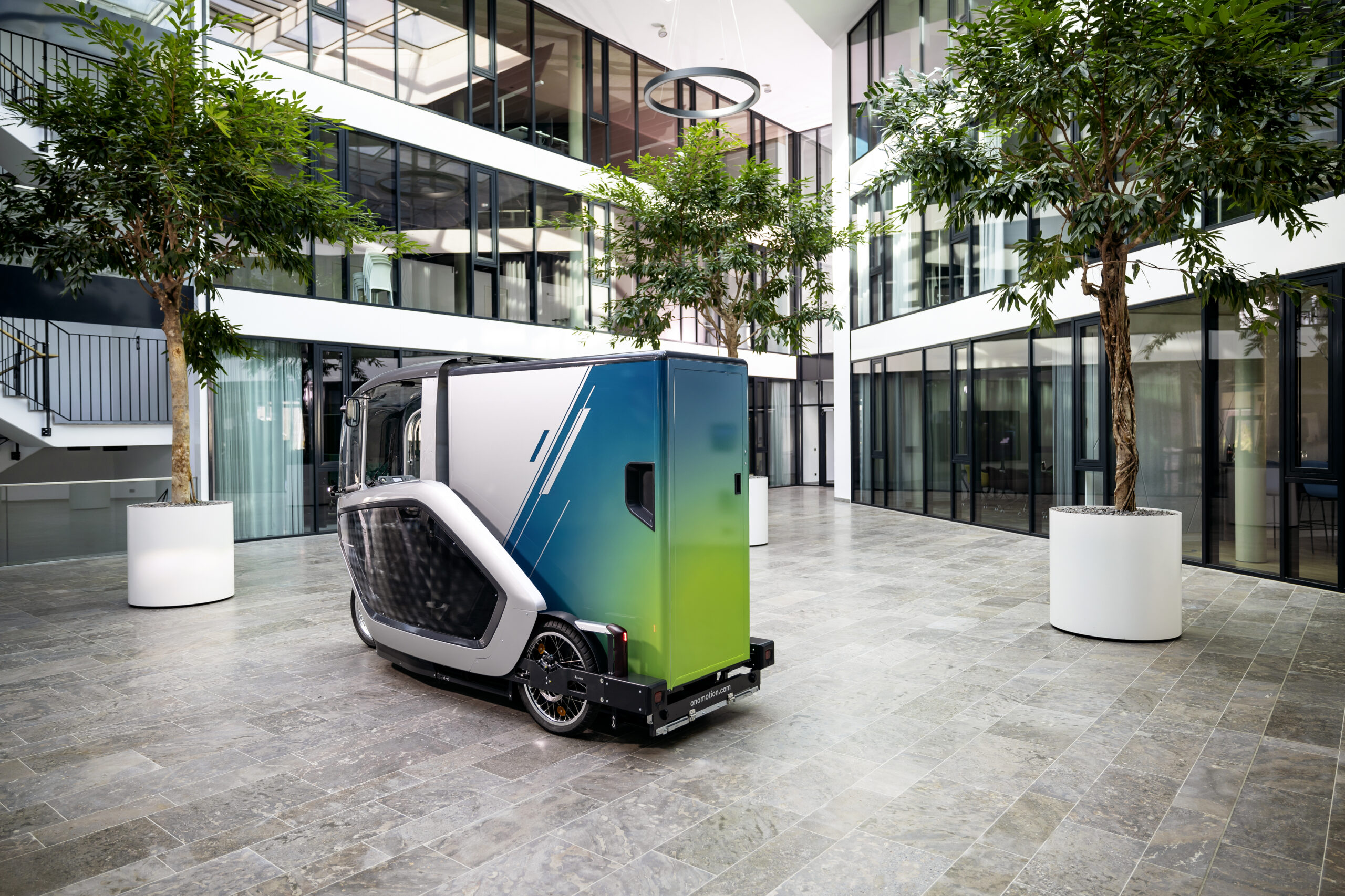Mercedes-Benz Explores Pairing eSprinter Vans With E-Cargo Bikes For Last-Mile Deliveries
Sign up for daily news updates from CleanTechnica on email. Or follow us on Google News!
A pilot program uses a special Mercedez-Benz eSprinter electric van as a mobile micro-depot which brings ONOMOTION’s standardized container modules to transfer points on its route, where the container is then off-loaded onto an ONO electric cargo bike which then completes the last-mile deliveries. With this system, the electric van can either go to the next e-cargo transfer point with another container, or both the van and the e-cargo bike can make deliveries in parallel, which can help decrease traffic congestion and improve delivery times.

Going all-electric in the delivery sector is a key component for a low carbon future, but there are other issues that can be addressed, such as traffic congestion and the time spent curbside while packages are being delivered. Switching to an electric version of a delivery vehicle helps decarbonize logistics, but if the electric vehicle has the same physical footprint and route as the ICE vehicle, it will have the same impact on local traffic (minus the tailpipe emissions). Using a smaller vehicle, such as an electric cargo bike, helps alleviate some of that congestion and frees up some space curbside during deliveries.
The electric van used in the pilot program is based on an eSprinter, but is actually a “technology demonstrator” dubbed the SUSTAINEER (for SUSTAINability pionEER), which is used to test “many innovative concepts for future delivery transport,” some of which may end up in production vehicles. The SUSTAINEER van has an integrated hydraulic lifting arm with rollers to load and unload the containers, which have a volume of more than two cubic meters and a payload capacity of 200 kg (440.9 lb), and the van can fit two containers plus shelving for other packages.


When the van reaches a transfer point, the container, which has wheels on the bottom, can be quickly unloaded from the van and then rolled onto an ONO electric cargo bike, after which the e-bike makes the last-mile deliveries for the packages in the container. With the containers loaded correctly so that the parcels are in order of delivery along the route, the driver of the e-cargo bike can make the last-mile deliveries efficiently and quickly.
In addition to the integrated container lifting system, Mercedes-Benz Vans says that the SUSTAINEER, by using a combination of “near-body heating” (heating close to the driver’s body instead of the entire van) and zonal air conditioning, requires up to 50% less energy for climate control. The van also incorporates a PM10 filter in the front, which reduces particulate matter from tires, brakes, asphalt, etc., by 55%, which, while it doesn’t further decarbonize deliveries, helps to protect the drivers, who are exposed to these pollutants all day long.
ONOMOTION’s ONO e-cargo bikes, which are pedal-assisted and have a top speed of 25 km/h (15.5 mph), also include a throttle to get going from a full stop, but it tops out at 6 km/h (3.7 mph). The ONO cargo models have a 1,400 Wh swappable battery for a range of about 30 km (18.6 miles), with the option of having a second onboard battery for a total range of up to 60 km (37.2 miles). The ONO cargo bikes can be configured in different ways depending on their intended end use, and the company also makes a version called the ONO Allround, which is akin to a mini pickup truck that can haul Euro pallets and other larger cargo items.
Images courtesy of Mercedes-Benz Vans.
Have a tip for CleanTechnica? Want to advertise? Want to suggest a guest for our CleanTech Talk podcast? Contact us here.
Latest CleanTechnica.TV Video
CleanTechnica uses affiliate links. See our policy here.


